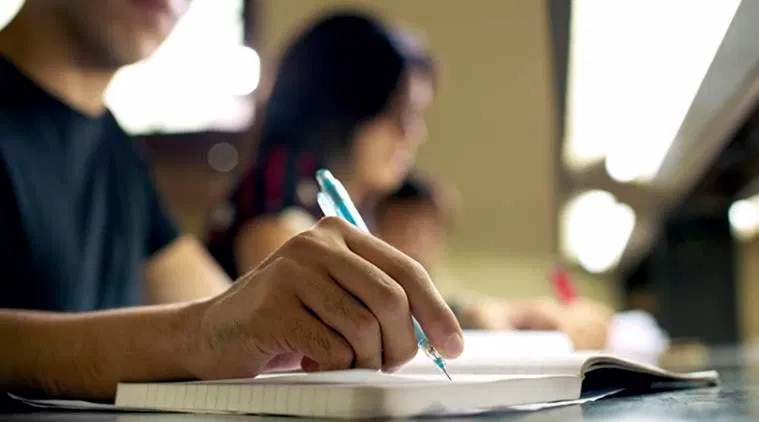 I propose that the students who are interested in an IIT B.Tech degree join any engineering college, in a branch of their choice. (File Photo)
I propose that the students who are interested in an IIT B.Tech degree join any engineering college, in a branch of their choice. (File Photo)
I am not suggesting that the current batch of students be deprived of admission into IITs. I only want to protect the interests of more than 50 per cent of the students who stand to lose greatly if the JEE Advanced is held any time soon. These are the students who, because of the lack of internet, have not been able to join live classes with their teachers, and coaching classes, and hence have been left out in preparation for JEE. How do I know that so many students have this problem? A University of Hyderabad survey showed that only 37 per cent of their students had uninterrupted internet. For school students, this could be worse, or at best comparable. The following proposal addresses this and other issues.
I propose that the students who are interested in an IIT B.Tech degree join any engineering college, in a branch of their choice. Let JEE Advanced be conducted two years later, based on the first two years of their branch, with NPTEL/SWAYAM video courses as the syllabus, which can be accessed offline. Those who get selected can complete the remaining two years at an IIT and graduate with a B.Tech degree.
In the current approach to admissions, students start preparing from an early age. About a lakh of them also spend an extra year preparing exclusively for IITs, after completing class 12. Unfortunately, more than 90 per cent of them do not make it into the IITs. For them, the JEE preparation does not help in their further studies. On the other hand, it devastates them and deprives them of their childhood.
Work by Akash Manoj in inventing a method to detect silent heart attacks shows that school students can do excellent research if they don’t have to spend all their time in preparing for an entrance examination. Given that about a crore students graduate from our schools, we should have at least a few path-breaking inventions every year. However, all our top students in schools no longer undertake any science project, they only prepare for the JEE Advanced. If the burden of preparing for the JEE Advanced is removed, our school students will execute outstanding projects, come up with inventions, and do well in international competitions.
If the method proposed here is implemented, IITs will have to teach only 3rd and 4th-year B.Tech students and not 1st and 2nd-year students. The capacity thus released can be used to accommodate double the number of students without any additional expenditure. This alone should be a reason why the current batch would want to postpone the JEE Advanced.
The already reputed SWAYAM/NPTEL videos can be re-purposed and improved significantly. These videos, corresponding to the first two years’ courses, can be dubbed into all our languages, thereby making IITs more accessible. Through the Ask a Question programme offered at IIT Bombay, and other similar programmes, students’ doubts from the videos can be addressed free of cost.
At the end of two years, those who do not clear the JEE Advanced can continue their studies in the same engineering college. They will do well in subsequent studies if their JEE Advanced preparation is good. Moreover, it will help them do well in GATE two years hence, using all four years of SWAYAM/NPTEL courses for admission into an M.Tech programme at an IIT. As clearing the GATE and doing an M.Tech is an option available to everyone, one may be allowed to appear in JEE Advanced only once, two years after one graduates from the school. However, one may be allowed to write GATE any number of times.
I propose that both JEE Advanced and GATE be offered through a two-step process: Select 10 times the number of students as per the seats available using a multiple-choice-question based screening exam. The selected students may be invited to undergo a problem-solving exam for final selection. This format will help select outstanding students.
Migration of students from engineering colleges to IITs in the 3rd year will not cause many problems to the former, as not many students are expected to get selected from any college. If on the other hand, a college keeps sending a large number of students to the IITs, it is good enough to join hands with IITs to teach 3rd and 4th-year students. Similarly, if a coaching institute sends a lot of students to the IITs, it should be invited to become an engineering college.
The proposed method can be made friendly for industry as well. For one, the JEE Advanced can have a programming test, which will ensure that all our engineering graduates get good in this important skill. Having 10 times the number of students selected in the GATE screening exam will ensure that a large number of graduates are available to the industry. Finally, working professionals, some of whom may be diploma graduates, may be allowed to take GATE, and those who perform well can be recruited by industry as well as academic institutions anywhere in the world.
These methods will flatten the anxiety curve of students by postponing the burden of competitive exams to later years. It puts the JEE Advanced and GATE in proper perspective to provide a unified and humane solution. It recognises merit, wherever it is, without hurting anyone.
The writer is the Erach and Meheroo Mehta Advanced Education Technology Chair Professor at IIT Bombay